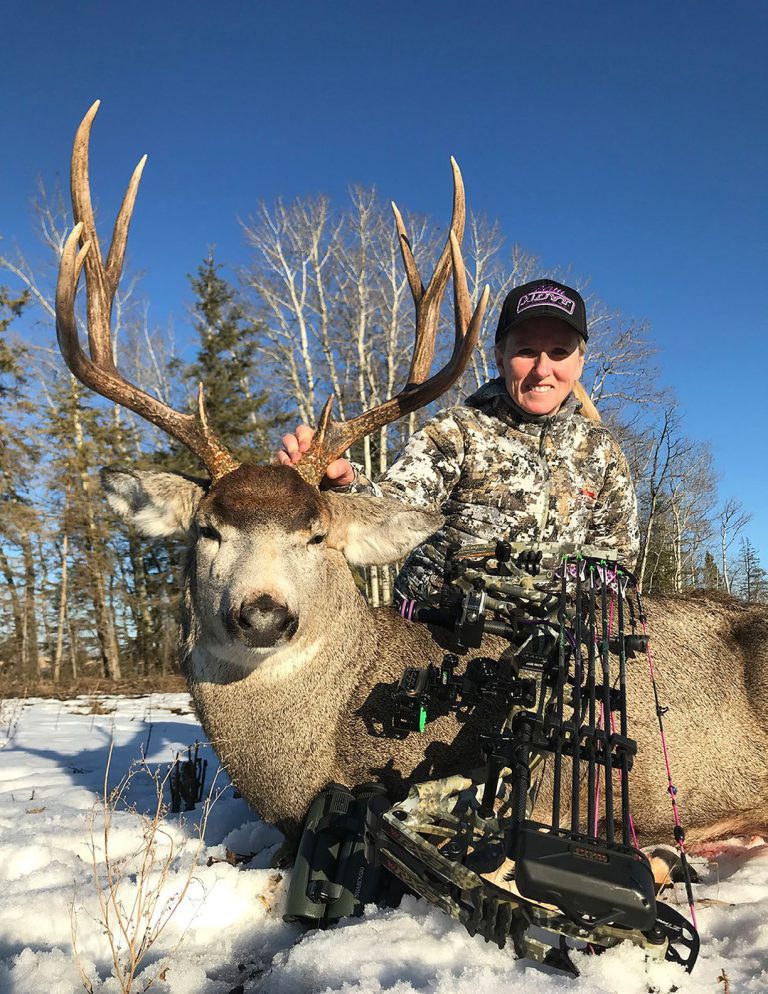Every bowhunter knows the feeling of uncertainty that follows some shots. We thought our arrow flew true, and our shot placement was good … then again, was it? Hunting with a bow requires that we understand how a broadhead hemorrhages vital organs. A lot can go sideways after we release that arrow. If we didn’t see the deer go down, it’s decision time. With most double-lung shots they’ll run an average of 40 yards before piling up. But not always. By comparison, bigger game like elk or moose for instance can go several hundred yards with a good hit. Following every shot, the question is – do you wait, or begin tracking immediately? Following are a handful of factors that should influence your decision- making when tracking wounded game.
MENTALLY REVIEW THE SHOT
This is a critical step. Immediately after the deer reacts to the shot, take note of how it responds and where it runs. Sounds simple, but this important step could potentially become the deciding factor in whether or not you retrieve your deer.
Recall if the deer was standing broadside, quartering away, or quartering toward. Consider where and how the arrow penetrated and if it passed through the deer or hit bone. If it stuck in the deer, how much of it penetrated and how much was still sticking out. A complete pass- through will give you an entrance and exit wound. Depending on the diameter of your broadhead, it should have created a considerable wound channel. Alternatively, if the broadhead is stuck inside the animal, particularly if it penetrates vital organs like the lungs, heart, liver or artery for instance, as the deer runs, it will be slicing and causing additional damage.
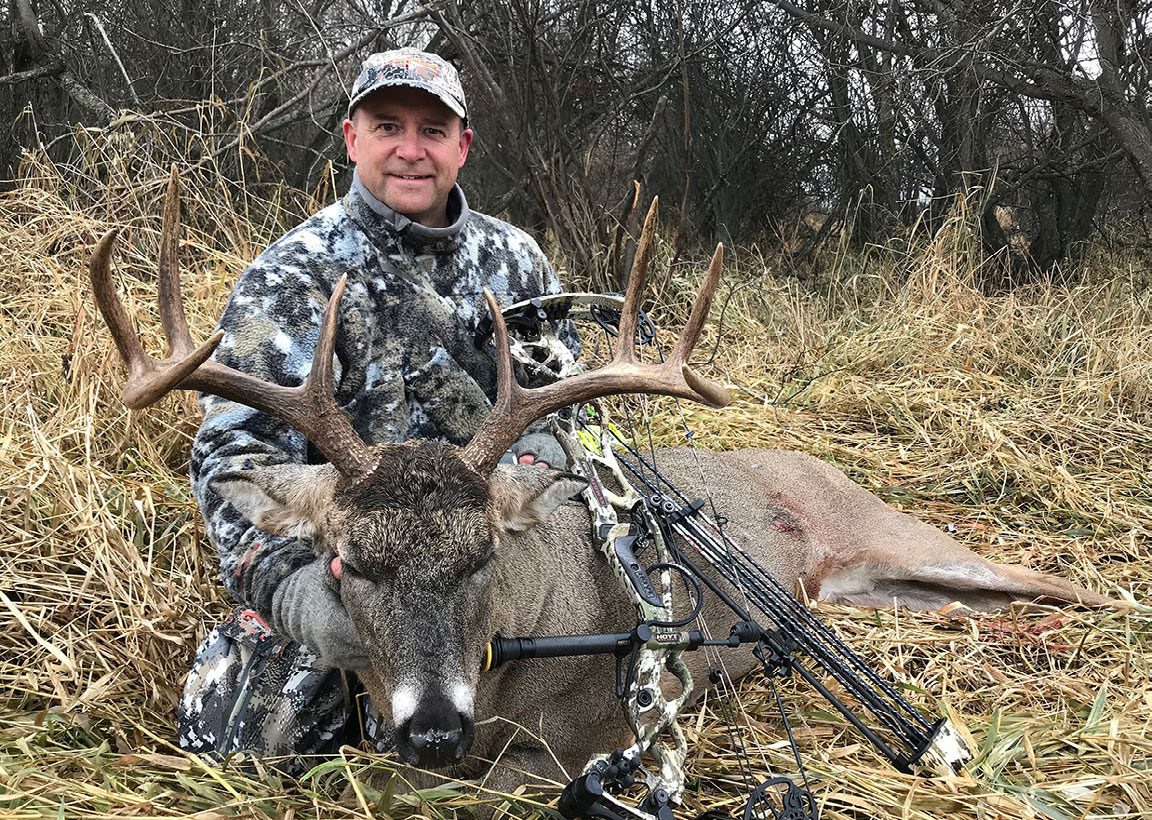
CONSIDER THE DEER’S PHYSICAL RESPONSE
Again, mentally review how the deer ran. Did it buck? Did it drop low with its belly to the ground? Did it rear up? Did it race away? Did it trot, or even just stand still or slowly meander away? These and more, are all scenarios that bowhunters witness after the shot.
Normally, with a double-lung or heart shot, a deer will kick and run, or simply race away. Often there will be some hair and maybe a bit of blood sign at the point of impact, but more typically the blood won’t begin to flow until several yards away.
If a deer is hit too far back on the body, in other words gut-shot, it will often either drop down low or hunch up, then race away. I’ve even seen them hunch and then slowly walk away. Many years ago, I shot a buck at a sharp quartering away angle. He literally took two steps and stood motionless for 10 minutes, then slowly walked 20 yards and fell over dead. No blood trailing necessary on that one.
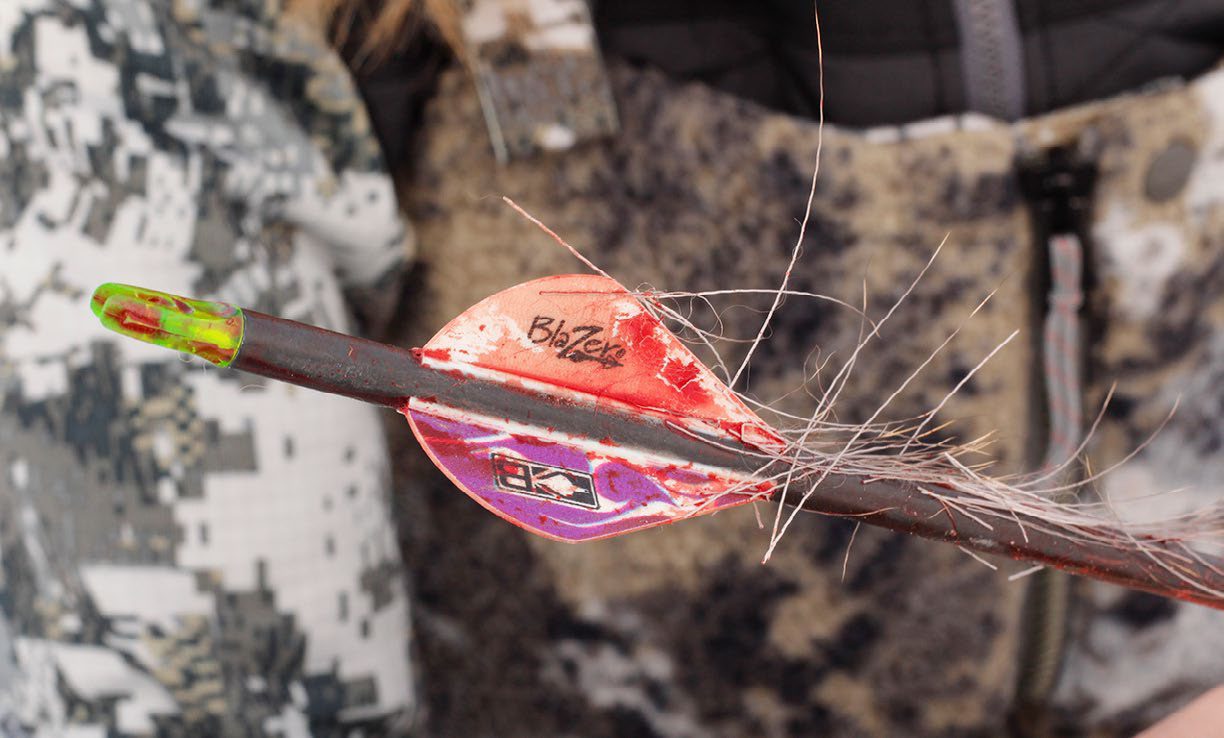
EASY DOES IT
Once you’ve reviewed the shot and the deer’s response, this is when it’s most important to slow things down and think clearly. Most of us get excited right after we let an arrow go. Adrenaline is pumping and our initial reaction is to go look. Fight that urge. There will be plenty of time to get excited when you get your hands on the deer.
It’s imperative to understand the anatomy of a deer, where the vitals are, and where the no-go zones are on the animal. Know that a broadhead is designed to kill through massive hemorrhaging alone. This means that the blades have to cut as much vital tissue as possible. Irreparable damage to a deer’s lungs, heart, liver, or major arteries are key. By damaging these, deer will bleed rapidly.
I’m a big proponent of the 45-minute rule. Unless I can see where it collapsed, it’s usually best to wait. I once watched a buck that had been hit perfectly with a massive cutting diameter Rage mechanical broadhead. It ran in a circle and stood almost motionless for nearly a half hour. He only went 40 yards, and had a gaping hole in his chest. Somehow, he had the strength to walk another 20 yards and, when he finally bled out, he laid down and still took another 15 minutes to expire. It was a real education to watch this unfold. Bottom line – with archery, seldom are two shots and reactions identical.
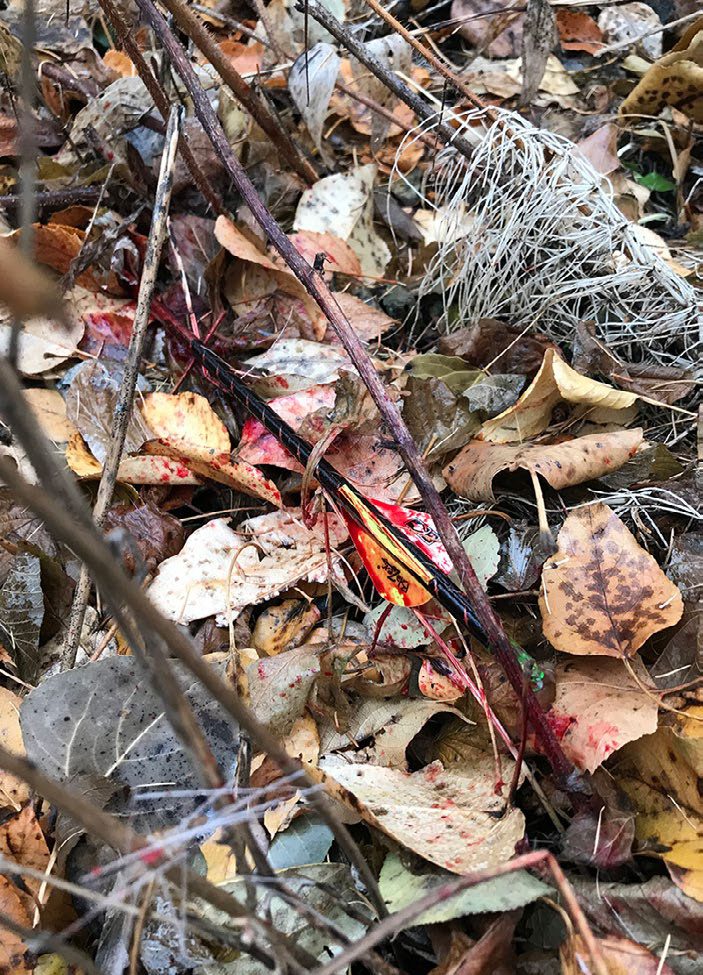
WAITING TIMES
Perfect double-lung shots will normally put a deer down in seconds, but like the scenario I outlined above, there are exceptions. As a general guideline, if you can see the animal down, it’s probably fine to walk up and check it immediately. If it vanishes into cover, consider waiting that 45-minutes. If it’s a questionable hit, think about what organs you may have penetrated. A lot has been published on waiting times. It’s commonly understood that with a liver hit, it may take the deer four or five hours to expire. If you follow up too quickly, you risk bumping it, and losing the blood trail, and the deer altogether – so decisions should carefully consider all that’s going on.
When deer are shot in the evening, and darkness falls, that’s when we face the decision around if we should leave the deer overnight. A judgement call has to be made. If the shot wasn’t good, we could risk bumping it. If it was good, then we risk losing it to coyotes or other predators.
INITIAL BLOOD SIGN
Initial blood sign is telling, but 20 yards after that initial blood, is usually when we really get to interpret what’s going on. First evaluate the color and texture of the blood. Is it bright red and frothy? If so, it’s likely indicative of a lung shot, especially if there’s a lot of blood. On the other hand, if it’s dark red and thick, it could be indicative of a liver shot. If its watery blood, that could be any number of things but possibly indicative of a non-vital hit.
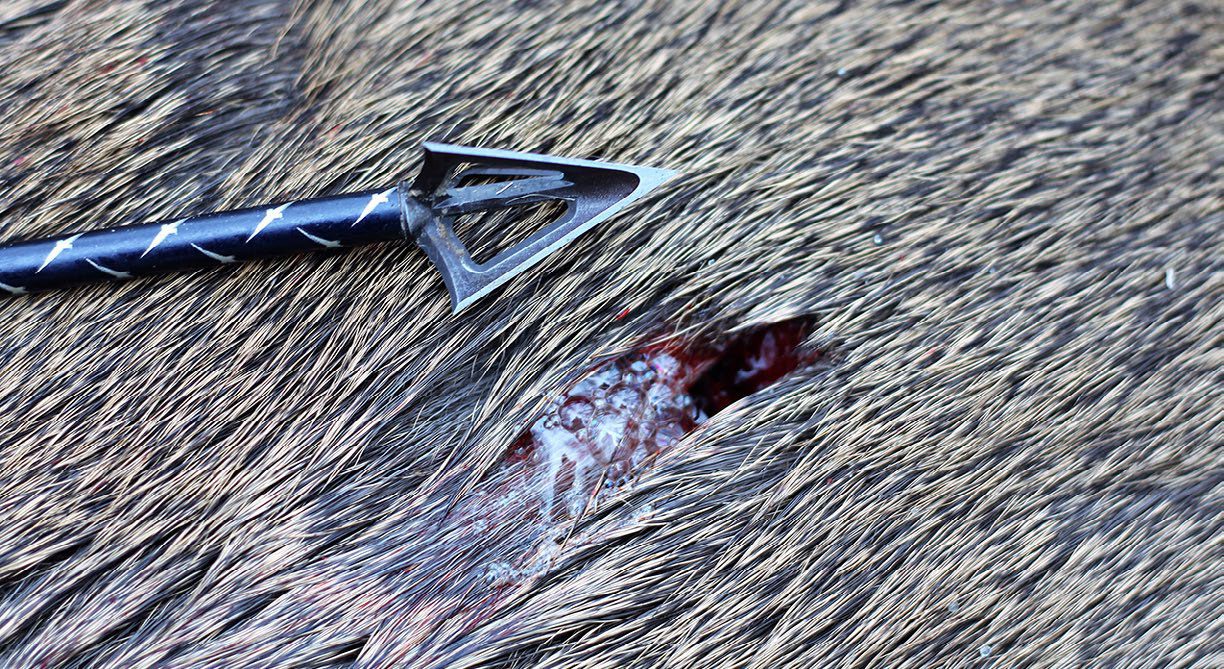
LOOK FOR BEDS
As you follow the blood trail, take note of any place the deer stopped and bedded down. Further, note how much blood is in the bed(s). If it’s losing a lot of blood, then it will eventually weaken. When you come across the first bed, carefully think about what the deer is doing, and if continuing on will push the deer, or if you think there’s a good chance it’s dead straight ahead. Pushing a deer that still has lots of energy, or is not fatally wounded, could mean losing the blood trail altogether. On the other hand, if you know that the deer is hit through one lung and you’ve already been on the trail for three or four hours, then you may be able to walk up on it and send a finishing shot into the deer. I once guided a bowhunter who had made this shot. By waiting, then moving in slowly and watching the deer bed, we were able to determine when it was weak enough to pressure it, then deliver a finishing arrow to put him down for good.
Now, here’s the other side of that. Fifteen years ago, I sent an arrow clean through a big buck’s chest. There was plenty of blood coming out of both sides. Even with what looked like an excellent shot, that deer covered almost a half mile before laying down. His first bed was completely saturated with blood, so I continued trailing. He bedded 12 times within 200 yards, then exited the woodlot and crossed a field, ultimately heading back and dying within 40 yards of where I’d shot him. Puzzling indeed, sometimes its difficult to explain why some deer just don’t go down right away.

HOW FAR HAVE YOU BEEN TRACKING?
Most fatally hit deer will expire within 80 yards, but not always. The furthest I’ve blood-trailed and retrieved one of my own whitetails was 400 yards. My arrow had penetrated and passed through the chest, a few inches back of what we would normally consider perfect shot placement. I was astounded with how little blood there was. With the help of my hunting partner, we meticulously walked deer trails, finding small blood spatters here and there along the way. After 90 minutes, we’d almost completely run out of sign when the deer crossed a meadow. From there we guessed which trail the buck may have taken and ultimately heard a magpie squawking just inside the cover. Sure enough, my buck was there – stone dead. He had probably taken at least 45-minutes to die, but that one too was an education.
I also shot a mule deer buck at 37 yards, facing toward me one time. The arrow buried deep into his chest between his two front legs. He ran off and disappeared. When I went to look for blood sign, it was minimal. Then, several hundred yards away, I saw the buck out feeding on a hillside. Perplexing, I watched him for a half-hour. His tail flickering, he appeared to be unscathed. I couldn’t understand how that was possible. A half-hour later I decided to do another stalk and try to get a second arrow into him. As I reached the top of the hill 15 minutes later, he was nowhere to be seen. By this time 45 minutes had passed. When I walked over the top of the hill, there was my buck lying stone dead. I took a good look around, and there was no blood sign at all. When I opened him up, my broadhead had destroyed his lungs. That was puzzling to say the least.
Most of us have learned that if a deer isn’t down after a coupled hundred yards, our odds of recovering it diminish substantially. I can tell you though, that my furthest blood trailing experience probably totalled close to a mile. So, what am I saying here? With bowhunting, you often don’t know. If you have blood and you can keep following it, do so.
DON’T FORGET TO LOOK UP
Sometimes wound holes close and blood coagulates over time. With a less-than-ideal hit, this happens a fair bit. Don’t just look on the ground, but keep an eye out for smeared blood on small trees and shrubs.
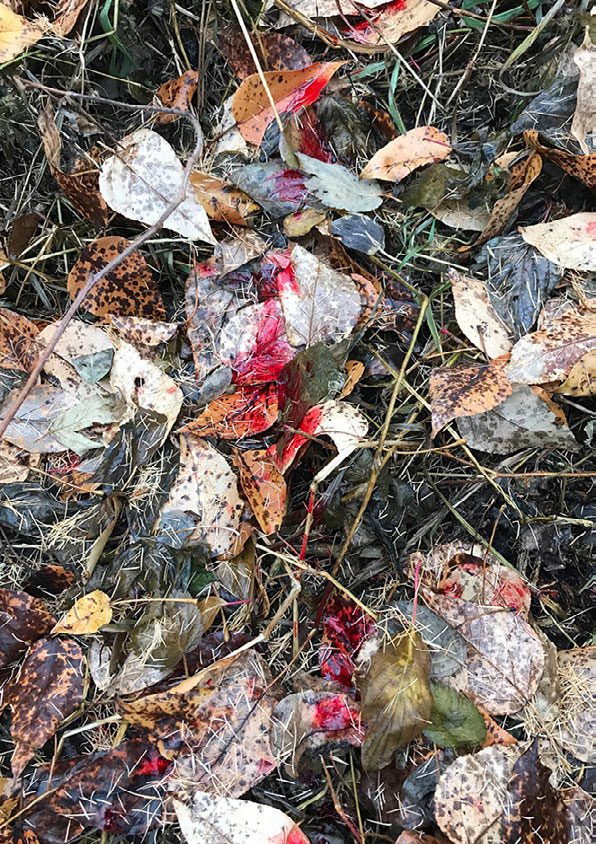
CONSIDER THE TOPOGRAPHY
Blood trails are not always obvious. Think like a deer, and guess where they ran. A long time ago, I single-lung shot a whitetail buck during an early season bowhunt. The trees were laden with lush green foliage, and the grass was long. I found a blood trail, but there wasn’t much to follow. Eventually I lost it altogether. Standing and evaluating the path the buck had taken, his direction of travel, and the topography, I guessed that he probably followed a ridge, and took the path of least resistance. By working my way down the most likely game trail, I eventually discovered him stone dead on the side of a dry slough.
So, if you find yourself in a similar situation, think about where deer would likely travel most easily, where it might go for cover, and also where it might go for water. Any animal that has lost a lot of blood will be thirsty.
WATCH & LISTEN FOR BIRDS AND PREDATORS
Finally, if a blood trail disappears and you’re doing everything you can to find your shot deer, always be listening for coyotes, magpies, crows, and ravens. Particularly if you need to leave your deer overnight. By early morning, scavengers may have found your deer. If so, they’ll be making a racket.
In the end, blood trailing is about decision-making, considering the information available to you, and evaluating the quality and quantity of the blood sign.
Per our affiliate disclosure, we may earn revenue from the products available on this page. To learn more about how we test gear, click here.





